10 Most Expensive Mistakes New Amazon Sellers Make (and How to Avoid Them)

Every day, people jump into Amazon hoping to strike gold. But most new Amazon sellers lose money before making their first sale. Don’t be one of them. We’re about to break down the ten most costly mistakes new Amazon sellers make. These are based on real stories from Reddit and top Amazon experts. Some of them lost thousands. Others got banned before their first sale. Read this guide before you invest your first dollar. You’ll save money, time, and avoid the biggest regrets. 1. Jumping In Without Research — or Trusting the Wrong “Guru” “I followed every guru gimmick in the book… My main takeaway was not to follow a cookie-cutter scheme that promises a guaranteed revenue stream after following 5 easy steps. Amazon FBA is not passive income, it’s a full-time job, one I had nowhere near the time for.” – from the Reddit post “I lost nearly $8000 selling on Amazon FBA” Many new Amazon sellers fall into the trap of buying expensive courses that promise overnight success. Some influencers make more money selling courses than selling products. These “gurus” often push outdated methods or generic advice that no longer work in today’s market. If you don’t research properly, you’re starting your business blind. You’ll waste money on the wrong products, break Amazon’s rules, or mismanage your launch. That can cost you thousands or your entire account. Instead of rushing in, use real data tools like Helium 10 or Jungle Scout. And always go to Amazon’s free Seller University. Learn from people who are still selling, not just talking. 2. Choosing the Wrong Product If your product is seasonal, has too much competition, or nobody wants it, it won’t sell. That’s why picking the wrong item is a costly mistake. According to a survey, over 70% of failed sellers say poor product selection was their biggest mistake. Many new Amazon sellers make this mistake by chasing trends or picking products they like personally. But Amazon is not about what you like; it’s about what the customer wants and is already buying. A trending product might look good today, but it loses steam by the time your inventory arrives. Avoid chasing TikTok trends or “winning product” videos. These products often attract copycats and leave little room for profit. Choose something with steady demand, few strong competitors, and something that feels different, even if it’s small. Research product reviews, read Q&A sections, and look for what’s missing in the top sellers. 3. Overordering (or Underordering) Inventory “But right now I am at a point where I don’t want to continue with Amazon, and FBA inventory and PPC ad fees are just too high.” – u/Adventurous-Jaguar97 “Running out of inventory. Which quickly happens if your listing takes off and you have long lead times.” – Reddit user Buying too much inventory too soon is a mistake many new Amazon sellers regret. It’s easy to believe that your product will fly off the shelves. But if it doesn’t, you’ll get stuck paying monthly and long-term storage fees. That money could’ve gone into marketing or better product selection. At the same time, ordering too little has its own problems. If you run out of stock, your listing loses momentum and drops in Amazon’s ranking. It can take weeks or months to recover your position. Start smart. Try 100 to 300 units and watch how your sales go. Use that info to plan your next order. Track sales trends, use inventory forecasting tools, and never guess your reorder timing. 4. Ignoring Amazon’s Rules and Policies New Amazon sellers often skip reading the rules. That’s risky. Amazon takes its policies very seriously, and breaking them (even by mistake) can lead to your account being flagged or shut down. Common violations include: Amazon frequently updates its policies on safety, compliance, and labeling. The latest guidelines are available on Amazon’s official policy page. What to do: Don’t assume the rules are flexible. Follow them closely to protect your account and avoid costly suspensions. 5. Poor Listing Optimization Even if you have the best product, buyers won’t find it if your listing is bad. Poor titles, weak bullet points, and unhelpful descriptions can cause your product to get buried in Amazon’s search results. Many new Amazon sellers underestimate how much a strong listing can improve conversion rates. Your listing should clearly explain the product’s benefits, not just its features. Avoid this by using keyword tools like Helium 10 to find what customers are actually searching for. Write clear titles, bullet points, and descriptions that answer buyer questions and highlight what makes your product stand out. For a step-by-step walkthrough, check out this complete guide to optimizing your Amazon listing in 2025. 6. Weak Product Images and No Video When shoppers scroll, they stop at what looks good. If your images are low quality or confusing, they’ll skip you. Strong listings use: Videos help, too. Even if they’re made on your phone. Show the product clearly and in action. Learn how to use video effectively in this guide to boosting Amazon sales with video. 7. Burning Cash on PPC Without a Strategy Many new Amazon sellers run automatic ads with no plan. They spend more than they make, and often don’t even realize it until they’ve wasted hundreds. Amazon PPC (Pay-Per-Click) is powerful, but only when you understand how to use it. If you don’t monitor your ACoS (Advertising Cost of Sales), you can lose money fast. Instead, start with manual ads. Use low bids and a small daily budget. Watch your numbers every week. Look for good keywords, and cut the ones that cost too much. Tools like Amazon’s Campaign Manager or third-party options can help track your performance and suggest optimizations. Also, avoid common advertising traps many beginners fall into by reviewing the top PPC mistakes Amazon sellers make. 8. Not Building an External Traffic Funnel Amazon controls your traffic. If ads become too expensive or your account gets flagged, you have no backup. Many new
Is Amazon Dropshipping Still Profitable in 2025?

Imagine starting your own online business today. You don’t need to touch any products, rent a warehouse, or spend thousands of dollars on inventory. That’s what Amazon dropshipping promises. This business idea still attracts many people each year. But here’s the big question: Is Amazon drop shipping still profitable in 2025? Or has it become too hard to succeed? In this blog, we’ll explain how Amazon dropshipping works today, how much money you can make, the real dangers involved, and better options for people who want to earn online. What Is Amazon Dropshipping? Amazon drop shipping lets you run a business without holding any inventory. Instead of storing products yourself, you simply list them on Amazon. When a customer places an order, you purchase the item from a third-party supplier, who then ships it directly to your customer’s doorstep. Check out this in-depth overview from Shopify to understand how the dropshipping model compares to others like FBA. On the surface, this setup looks easy. You don’t need a warehouse, and you never touch the product. However, you’re still responsible for everything—from listing the product correctly to delivering great customer service. Most importantly, Amazon requires you to present yourself, not your supplier, as the official seller. This means you must remove any supplier branding or packaging that might confuse the customer. It might sound like a hands-off model, but drop shipping on Amazon demands attention to detail and strict compliance with its rules. For more details, you can review Amazon’s official policy here. The Appeal of Amazon Dropshipping Many people still ask, “Is Amazon dropshipping worth it in 2025?” That’s because the model seems simple and affordable. New sellers like it because they don’t need a lot of money to start. They don’t have to rent a warehouse. They can run the business from home or anywhere. Also, YouTubers and influencers like Jordan Welch, Biaheza, and Sebastian Ghiorghiu make it look easy. They often call it “passive income.” But the truth is usually harder. Amazon Dropshipping Market Trends in 2025 Amazon still leads the eCommerce world in 2025. However, competition is much stronger now. According to Marketplace Pulse, as of 2025, Amazon hosts over 9.5 million total sellers worldwide, with more than 2.5 million currently active. Customers now expect lightning-fast shipping, competitive pricing, and top-tier service. To stay ahead, sellers are turning to AI-driven tools to manage pricing, run smarter ads, and automate stock tracking. The market continues to evolve quickly, and staying competitive takes more than just listing a product. Even small sellers need to offer a professional experience. That means drop shipping on Amazon today takes a lot more work and planning. To get ahead of the curve, check out Amazon FBA in 2025: Should You Still Start or Is It Too Late? Profit Margins: What the Numbers Say So, how much money can you really make with Amazon drop shipping? Most sellers earn a 10–15% profit on each sale. But after you include all the costs, the profit gets smaller. Amazon takes a fee of 8–15%. You also pay for shipping, returns, and ads. For example, if you sell a product for $30 and your supplier charges $25, you make $5. After Amazon fees and ads, you might even lose $1 per sale. In general, beginners earn only $100–$500 each month unless they grow their store fast. The Hidden Risks of Amazon Dropshipping At first, Amazon dropshipping might sound like a smart idea. But many risks can cause big problems. Amazon can suspend your account if you break the rules or ship late. Suppliers may send the wrong items or delay orders. You can’t check the product’s quality yourself. You might also get many returns or bad reviews. One mistake can shut down your account. Amazon’s Strict Dropshipping Policy Amazon permits drop shipping only if its guidelines are followed. You must present yourself as the seller on all documentation, remove any branding from your supplier, and handle customer service and returns. If you break any of these rules, Amazon can suspend your account right away. Once suspended, it’s very hard to get your account back. Even one small mistake, like your supplier using their own label, can cause a ban. Real Seller Experiences in 2025 Let’s hear what real sellers say in 2025. “I made $2,000 in one month, but lost my account over a late shipment.” – Reddit user. “Too many returns. I moved to wholesale instead.” – Amazon forum seller Some people do well at first. But many end up with problems they didn’t expect. Most beginners quit after facing account issues, supplier mistakes, or very low profits. You can find many stories like these in the r/FulfillmentByAmazon Reddit community, where real sellers share their experiences. The Bottom Line: Is It Worth It? Amazon dropshipping still works in 2025, but that doesn’t mean it’s a smart choice. It gives you a low-cost way to start and a business you can run from home. But it also brings very small profits, big risks of account bans, and no control over your products. Unless you build strong systems and work with top suppliers, it’s hard to grow this business. Better Alternatives in 2025 If you want to run a stable online business, consider better choices than Amazon dropshipping. For example, you can start Private Label (FBA) to build your brand and control quality. You can try Wholesale to buy in bulk and get better prices. Or open a Shopify Store and design your own brand. Print-on-Demand is great for artists. And Affiliate Marketing works if you don’t want to manage products at all. These models give you more freedom and better long-term results. To explore a smarter launch process, read 5 Powerful Steps to Launch a Winning Amazon Product. Amazon Dropshipping Isn’t Dead (But It’s Not Smart for Most) So, is Amazon dropshipping still profitable in 2025? Yes, but only for a few. For most people, it’s a hard path with low rewards. Amazon rules are strict,
How to Optimize Your Amazon Listing in 2025: A Complete Guide
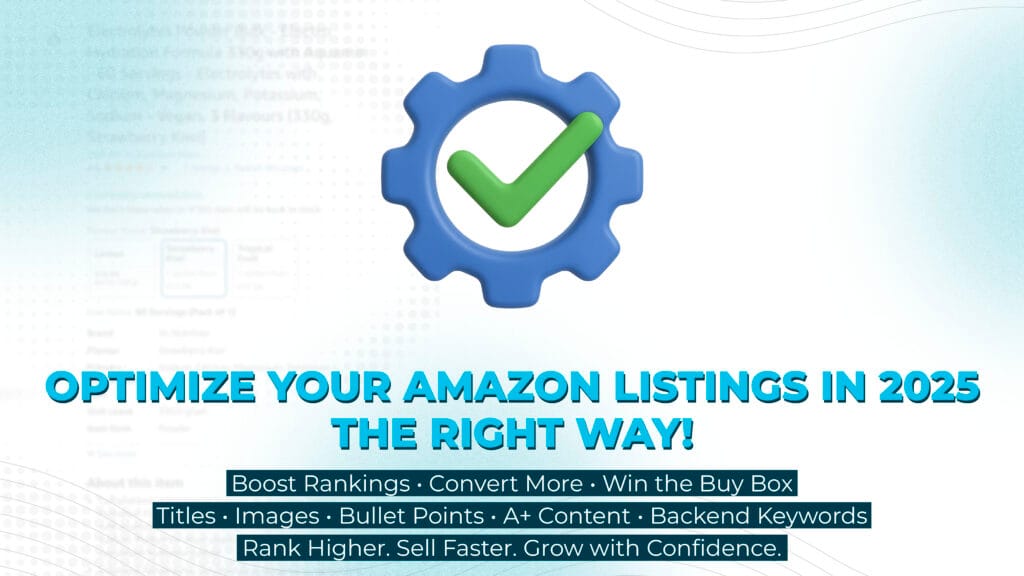
If you’re selling products online, having a great Amazon listing is one of the most important things you can do to grow your business. In 2025, competition on Amazon is bigger than ever, and shoppers have more choices than before. So, how can your product stand out? This guide will teach you, in simple steps, how to improve your Amazon listing. You’ll learn how to write clear titles and helpful descriptions and how to showcase your product effectively. What Is an Amazon Listing and Why Is It So Important? An Amazon listing is like your product’s home on Amazon. It’s the page where people go to read about what you’re selling. It has your title, pictures, bullet points, description, and customer reviews. All of these parts work together to help shoppers decide if they want to buy from you. Here’s the big deal: When your listing is written well, it shows up higher in search results. That means more people see it. In fact, sellers who optimize their listings see up to 30% more sales, according to Clearco. Start with a Strong Title The product title is the first thing a shopper sees. In 2025, Amazon limits titles to 200 characters, and they must be easy to read. Your title should clearly explain what the product is. A good title usually includes your brand name, the product type, and one or two important features. Don’t add extra words, symbols, or repeat the same thing. Let’s say you’re selling a water bottle. A strong title could be: It is simple, clear, and full of useful information. Focus on finding the right keyword through market research, which allows your product to show up higher when someone searches for the product you are selling using that specific keyword. Make Bullet Points Easy to Scan Bullet points are where you highlight your product’s top features. Even though they are short, they matter a lot. Shoppers read them quickly to decide if your product meets their needs. Try to keep your points short and clear. Begin with something strong, like a benefit or key feature. For example, “Leak-Proof Design” or “Keeps Drinks Cold for 24 Hours.” You can explain a little more after that, but don’t go overboard. Amazon gives you space for five bullet points. Use them wisely to cover the most important things a customer should know. Use Simple, Helpful Descriptions Your product description is where you can describe your item in more detail. Think of it as a story about how your product helps someone in real life. If you’re allowed to use A+ Content (through Amazon’s Brand Registry), this is where you can add photos, charts, and different sections. Amazon reports that A+ Content can increase sales by up to 170%. Even without A+ Content, a plain-text description can be powerful. Use short paragraphs. Avoid saying things like “best” or “#1 product.” Stick to facts, benefits, and how your product solves a problem. Add Great Images and Videos Photos are just as important as words. They help shoppers “see” your product from all angles. Amazon suggests using images that are at least 1,000 pixels on the longest side. The first image should have a white background and clearly show the product. Lifestyle photos (where the product is shown in use) are a great way to help people imagine using it themselves. For example, if you’re selling a yoga mat, show someone doing yoga on it. And don’t forget about video. In 2025, videos are a game-changer. Sellers who added product videos saw almost 10% more sales. Even a simple clip showing the product in action can build trust. Here are all of Amazon’s image guidelines Listings missing a main image will not appear in search or browse until you fix them. Choose clear, information-rich, and attractive images. Images must meet the following requirements: Collect Positive Reviews Reviews are like word-of-mouth on the internet. Shoppers trust them a lot. Listings with good reviews usually get more clicks and more buys. Some studies show reviews can boost conversion rates by over 20%. You can’t pay for reviews or offer gifts, but you can ask customers to leave honest feedback. Amazon provides a “Request a Review” button in Seller Central that you should use regularly. Also, make sure your customer service is top-notch. Fast replies and quick problem-solving often lead to happier reviews. Use the Right Search Terms in the Backend Amazon gives sellers a secret tool, backend search terms. Customers don’t see these, but they help Amazon understand what your product is and when to show it in search. Use this space to add keywords that didn’t fit in your title or bullet points. These could be misspellings, slang, or other words people might use to search for your product. Don’t include your brand name or repeat words you’ve already used. This extra step can really help boost how often your listing appears when shoppers are searching. Set a Smart Price Even if your listing is perfect, price matters. If your product is too expensive compared to similar items, you may lose sales. But if it’s too cheap, people might think it’s low quality. Watch what your competitors are charging and try to stay within the same range. If you’re using Fulfilled by Amazon (FBA), make sure your price covers Amazon’s fees and your cost of goods while still leaving you with a profit. Having a good price also helps you win the “Buy Box” — the main “Add to Cart” button — which can lead to many more sales. Winning the Buy Box means Amazon trusts your listing, price, and shipping speed. Keep Your Listing Updated Your Amazon listing is never “done.” The market changes, new reviews come in, and you may want to test new images or titles. Check your listing every few weeks to make sure everything is still working well. Use Amazon tools like the Listing Quality Dashboard to see if you’re missing anything. And keep an eye
Walmart vs Amazon: Should You Make the Switch?
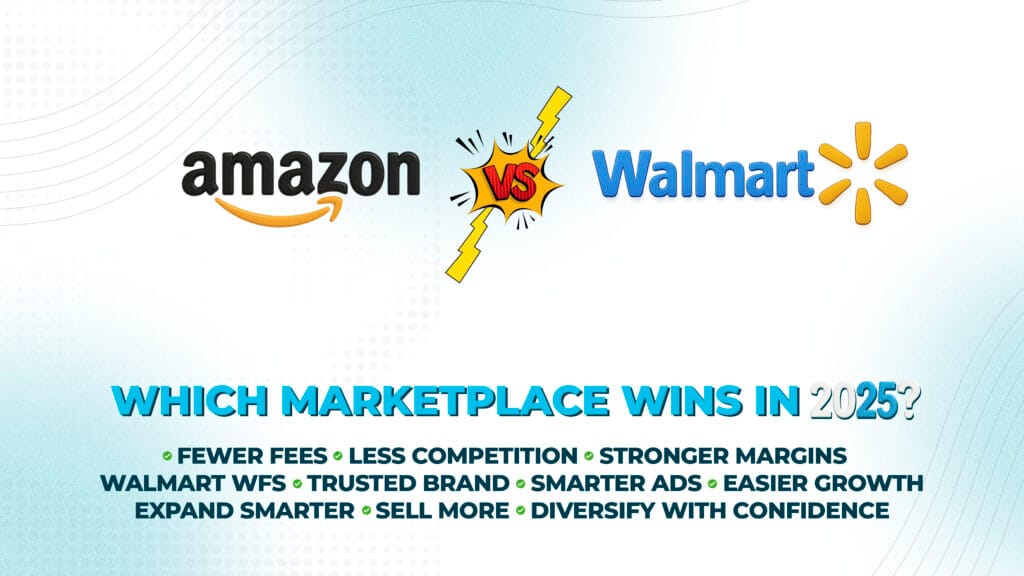
Walmart is quickly becoming the next big thing in eCommerce. While Amazon has long ruled the online marketplace world, Walmart is now giving sellers a powerful new way to grow their businesses. If you’re wondering about Walmart vs Amazon, the real question in 2025 might be: why aren’t you on both? For many sellers, Walmart offers a clear path to reaching new customers, standing out in a less crowded market, and growing faster with fewer fees and better margins. Walmart’s Marketplace Is Growing Fast Over 150 million people visit Walmart.com every month, and the number is growing. But unlike Amazon, Walmart still has space for new sellers to shine. That means you don’t need a big ad budget or an army of reviews to get noticed. Here’s what makes Walmart stand out right now: Walmart’s growth is opening doors for small and medium brands, not just big-name sellers. Walmart vs Amazon: What Sellers Need to Know When deciding between Walmart vs Amazon, it’s important to think beyond traffic numbers. Both platforms bring in millions of shoppers, but they operate differently, and those differences can affect your bottom line. Amazon is crowded. With over 9 million sellers, getting your product seen often requires heavy investment in ads. Walmart, in comparison, has far fewer sellers. That means new brands can get visibility faster, and sometimes with less spending. Another major point is trust. Walmart has built its reputation over the decades. Shoppers already trust the brand in stores, and that trust carries over online. For sellers, this helps drive conversions without needing to “prove” your brand every time. Fulfillment and Shipping Fast shipping is no longer a nice-to-have; it’s expected. Amazon’s FBA (Fulfilled by Amazon) is well known, but it comes with rising fees and tough restrictions. Walmart now offers a strong alternative called Walmart Fulfillment Services (WFS), which allows sellers to store their products in Walmart’s warehouses and offer 2-day shipping to customers. WFS is more flexible for many sellers. The fee structure is easier to understand, and you don’t face the same storage limits or seasonal surcharges that come with FBA. That means fewer surprises and more control over your margins. Most importantly, WFS helps sellers win the Walmart “2-day shipping” badge, which boosts trust and increases the chances of getting featured in search results. Understanding Your Customer: Who Shops Where? Walmart and Amazon attract different shoppers, and knowing your audience can help you decide where to focus. Walmart shoppers tend to be: Amazon shoppers are more likely to be: If your product is practical, affordable, and made for everyday life, Walmart’s marketplace may be your perfect match. Advertising Is Easier and Less Expensive on Walmart One of the biggest frustrations sellers face on Amazon is advertising. Costs are high, and competition is fierce. If you don’t spend heavily on ads, it’s hard to get visibility. Walmart’s ad platform is newer but growing fast. Right now, it offers lower costs per click and better returns for many sellers. You don’t need massive budgets to get started. With fewer sellers running ads, you can get real visibility at a fraction of the cost. That said, Walmart’s ad tools are becoming more advanced. Sellers who start learning the system now will have an advantage as the platform matures. Cost and Fees (Walmart Keeps It Simple) Amazon charges sellers a monthly fee just to stay on the platform, plus referral fees, fulfillment fees, and rising ad costs. For newer or smaller brands, these costs can add up fast. Walmart, on the other hand, does not charge a monthly subscription. You only pay a referral fee on sales, which is often similar to Amazon’s but without the added layers of cost. This lower barrier makes Walmart a smart option for sellers who want to grow without overspending from day one. Why Walmart Is the Smarter Play for 2025 Selling on Walmart gives you access to a growing market, lower costs, and a loyal and expanding online customer base. Amazon is still powerful, but it’s also crowded and expensive. Walmart’s advantages for sellers include: If you’re only selling on Amazon, you’re missing out on a massive opportunity. Diversifying to Walmart now gives you a chance to build momentum before the space becomes as competitive as Amazon. Work with Aventus: Launch and Grow on Walmart the Right Way At Aventus, we help brands go further, faster on Walmart Marketplace. Whether you’re just getting started or looking to scale, our team provides full support to make your Walmart strategy a success. We help you: Our mission is to help sellers succeed on the platforms that matter, and right now, Walmart is the one to watch. Contact Aventus today, and let’s build your brand on the marketplace that’s just getting started.
Amazon FBA 2025: Should You Still Start or Is It Too Late?
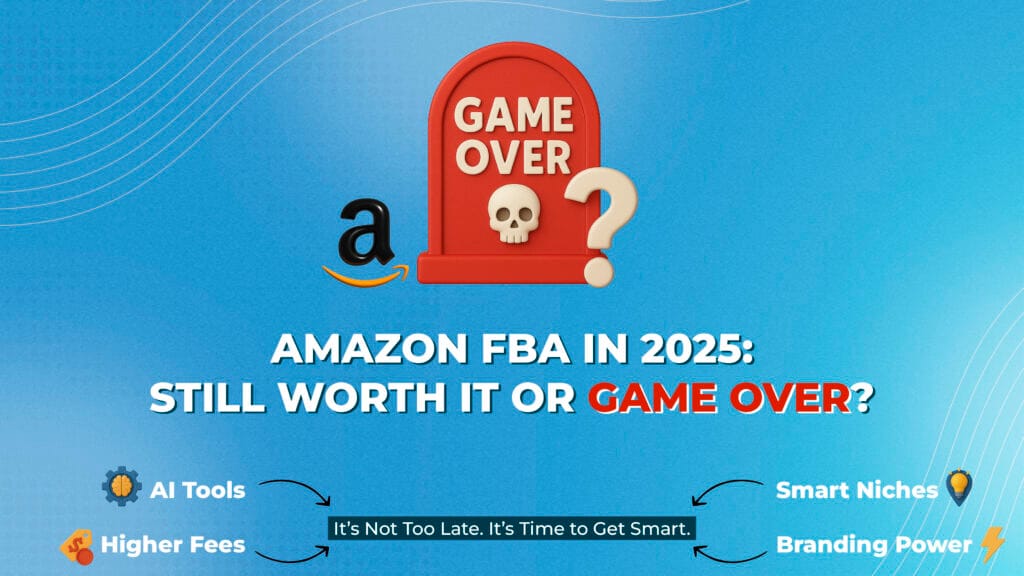
In the golden days of Amazon FBA, launching a private label product could turn $1,000 into a thriving eCommerce business. Fast-forward to 2025, and many sellers, new and seasoned, are wondering: Is it still worth starting FBA, or has the ship sailed? This is the Truth about Amazon FBA 2025. Let’s examine where Amazon FBA stands in 2025, the hurdles new sellers face, and whether it’s still a viable opportunity or a money pit waiting to happen. What’s New in Amazon FBA 2025? Rising Fees FBA fulfillment and storage fees have increased significantly, by as much as 15–20% since 2023. This is partly due to Amazon’s investments in logistics and sustainability. While this puts pressure on profit margins, it also discourages low-effort sellers and opens doors for more serious entrepreneurs. AI & Automation Are the Norm Sellers now use AI tools for listing optimization, pricing, PPC campaigns, and even customer service. It’s not just an edge, it’s a necessity. Manual operations are falling behind, and sellers using tech platforms like ChatGPT, Helium 10, and SellerAmp are staying competitive. Stricter Compliance Amazon has tightened its policy enforcement. Many sellers report account suspensions for minor infractions. However, those who maintain compliance and appeal processes proactively are staying ahead. Why Many Say “It’s Too Late” 1. Market Saturation Thousands of new sellers enter the marketplace every month. Most product categories, especially in beauty, home, and fitness, are flooded with similar private label items, making it difficult to stand out. 2. Higher Barriers to Entry Once you factor in product development, shipping, inventory, branding, and ad spend, you’ll need $3,000 to $10,000+ to launch a competitive product in 2025. 3. Profit Margins Are Shrinking With inflation, fee hikes, and rising PPC costs, squeezing out profit is harder unless you build real brand equity. Why Amazon FBA is Still a Great Opportunity (If You Do It Right) 1. Niche Opportunities Are Thriving New sellers are succeeding in ultra-specific markets with products solving real pain points. A Reddit user shared how they targeted a low-search keyword niche and are now generating $15,000/month with minimal ad spend. Micro-niches work if you find the right angle. 2. Global Marketplaces Are Expanding Amazon UAE, Brazil, India, and Singapore are seeing fast growth. Sellers launching in underdeveloped marketplaces face less competition and better margins. 3. Branding is Everything Now What separates the winners in 2025 is one thing: branding. The days of white-labeled me-too products are over. If you’re willing to treat Amazon as a channel, not your whole business, and build a recognizable brand with great customer experience, you’re already in the top tier of new sellers. Gone are the days of reselling factory products with minimal changes. In 2025, winning sellers will build brands with quality packaging, compelling storytelling, and multichannel presence (Instagram, TikTok, DTC sites). Amazon FBA is now a channel, not the whole business. What It Takes to Succeed in 2025 Let’s be honest, launching an Amazon business in 2025 isn’t for the faint of heart. It’s not passive income. It’s not an overnight success. It’s a real business, and it demands real strategy, discipline, and patience. Product research is now a science. Tools like Helium 10, Jungle Scout, and Keepa aren’t optional; they’re foundational. Sellers use them not only to find opportunities, but also to avoid dangerous product categories, low-profit segments, or seasonal traps. Equally important is differentiation. You can’t rely on just a different color or bundled accessory. Your product has to solve a problem better than others or connect with a specific audience in a way your competitors don’t. Smart sellers now invest heavily in packaging, messaging, and customer support to stand out. And then there’s the technology. In 2025, successful sellers are leveraging AI for listing copywriting, automated chat replies, PPC bid optimization, and review monitoring. Manual management is not scalable anymore. Sellers need patience and capital more than anything. This isn’t a $500 side hustle anymore. The runway is longer, and break-even might not come until month six or later. But when it works, it scales. Hybrid Models Are Gaining Popularity In 2025, smart sellers are diversifying beyond private label. They combine FBA with: This hybrid model reduces risk and maximizes long-term brand control. Final Verdict: Is It Too Late? No, it’s not too late. But it is too late to wing it. If you’re looking for a quick, passive way to make money online, FBA probably isn’t your best bet anymore. But if you’re serious about building a long-term business, have some capital to invest, and are willing to treat it like a real venture, Amazon still offers an incredible opportunity. More importantly, the buyers are still there (millions of them) shopping every day, looking for better products and better brands. If you show up with something they actually want and market it effectively, the game is still very winnable. Ready to Launch a Winning Amazon Brand? If you’re thinking about starting Amazon FBA or launching your own private label brand but feel overwhelmed by all the changes in 2025, you’re not alone. That’s where Brand Aventus comes in. We specialize in helping serious entrepreneurs launch, scale, and dominate on Amazon with services like: Whether you’re just getting started or need help scaling your current store, we’ll help you build a profitable, future-proof Amazon business with data-driven strategies and hands-on support. Book your free FBA strategy call with Brand Aventus today and take the guesswork out of growing your eCommerce brand.
5 Powerful Steps to Launch a Winning Amazon Product
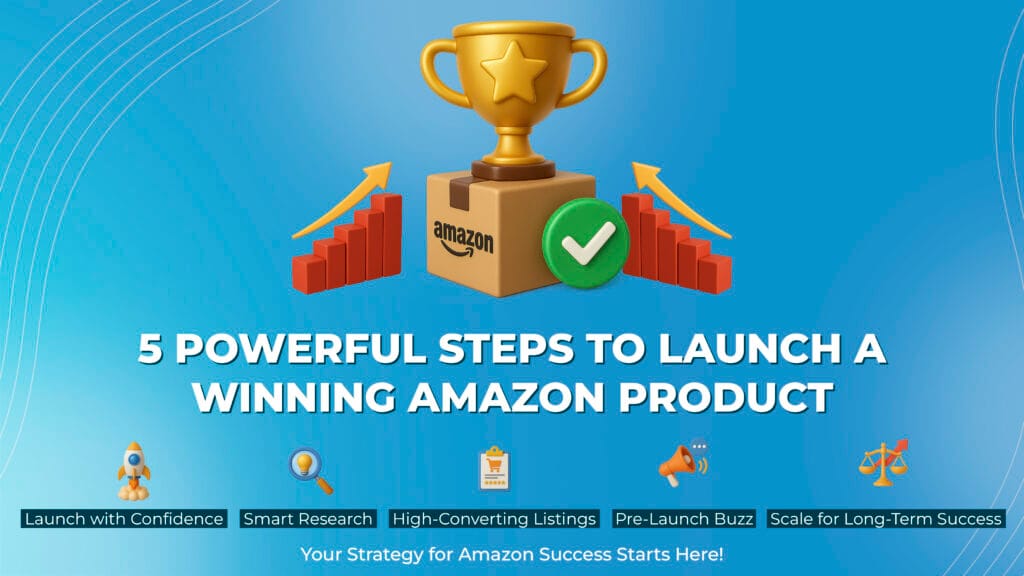
Launching an Amazon product successfully isn’t about luck; it’s about strategy. In the highly competitive Amazon marketplace, the right launch plan can generate early momentum, attract loyal customers, and position your brand for long-term growth. Here are five powerful, proven steps to ensure your Amazon product launch makes a lasting impact. 1. Validate Your Product with Smart Research Success on Amazon starts long before your product goes live. Solid research helps ensure you’re launching a product that people actually want and that you can compete in your chosen niche. Start by identifying trends and demand using tools like Jungle Scout, Helium 10, or AMZScout. These platforms can help you: Look closely at the top-performing listings in your category. Pay attention to what they do well and where they fall short. This will give you an opportunity to position your Amazon product as the better alternative. You can also hire an expert to conduct the product research for you. Contact us, and one of our experts will take this step off your plate. 2. Build a High-Converting Product Listing Your product listing is your digital storefront, and it’s often your only shot at turning browsers into buyers. It needs to be optimized for both Amazon’s algorithm (A9) and human psychology. Key components of a great listing include: According to Amazon Seller Central, a listing with 7+ images, optimized titles, and clear benefits tends to convert better. Use real customer language where possible, and test different elements over time to optimize performance. 3. Build Pre-Launch Buzz and Audience Interest One mistake new sellers often make is launching their Amazon product in silence, simply going live and hoping the platform does the work. But without initial traffic or social proof, your listing can be overlooked. That’s why building anticipation before launch is so important. Start by working with influencers or bloggers in your niche. You don’t need massive accounts; in fact, micro-influencers often have higher engagement and are more affordable. Provide them with samples ahead of time so they can review or promote your product when you go live. Contact us today, and we can connect you with appropriate influencers who can help you build the hype. Another powerful pre-launch tactic is setting up a simple landing page where people can sign up for early access or an exclusive launch discount. Services like ConvertKit or Mailchimp make it easy to collect emails and send automated sequences to drive traffic on launch day. By the time your product is live, you want a warm audience ready to buy. That early momentum can help your product rank better in Amazon’s search algorithm, known as the A9. 4. Choose the Right Launch Strategy to Drive Momentum Once your Amazon product is listed, you’ll need a smart launch plan that aligns with your goals, audience, and inventory readiness. There are three common launch strategies, each suited to different seller needs. Soft Launch A soft launch is ideal for new sellers or those testing a new product category. It involves minimal promotion and focuses on gathering feedback, optimizing your listing, and validating demand. Benefits of a soft launch: This strategy works best when you’re still learning the ropes or when launching a new Amazon product without a large existing audience. Hard Launch A hard launch involves an aggressive promotional push from day one. You’ll use Amazon PPC, influencer campaigns, social media ads, and email marketing to drive immediate traffic and sales. It’s best for: A hard launch requires coordination and budget. You’ll need inventory ready, customer support on standby, and ad campaigns dialed in to handle the influx. Seasonal Launch This type of launch targets peak shopping periods like Q4, Black Friday, or Prime Day. It’s ideal for products that align with seasonal demand or make great gifts. Key considerations for seasonal launches: The upside? Massive volume potential. The downside? High competition and the risk of stockouts if demand exceeds forecasts. Whichever strategy you choose, make sure you launch with at least 5–10 initial reviews (via Amazon Vine or ethical email follow-ups), use targeted Amazon ads to drive traffic, and offer limited-time deals or coupons to boost conversions. Launching without momentum is like opening a store in the desert. These strategies give you the visibility and sales velocity needed to thrive. 5. Optimize and Scale for Long-Term Growth Your work is far from over after launch. The post-launch phase is where true growth happens. This is when you gather data, test changes, and optimize to improve performance and scale profitably. Focus on: Customer feedback is another goldmine. If reviews highlight a recurring flaw or complaint, act fast. A minor product tweak can result in better ratings and more sales. Once your Amazon product is gaining traction, explore options to scale: Scaling smartly ensures your success isn’t short-lived. With each launch, you become more efficient, more data-driven, and better positioned to build a lasting brand. Conclusion Launching an Amazon product is no longer a simple plug-and-play task. It’s a process that requires preparation, strategy, and continual improvement. Whether you choose a soft launch to test the waters, a hard launch to make a big splash, or a seasonal approach to ride the wave of demand, what matters most is that your plan fits your product and goals. The most successful sellers treat their Amazon business like a brand, not just a one-time sale. If you follow these five steps with the right mindset and tools, you’ll set yourself up for sustainable growth and long-term success on the platform. Ready to Launch Your Amazon Product the Right Way? At Brand Aventus, we specialize in turning product ideas into profitable Amazon success stories. Whether you’re launching for the first time or looking to scale, our team of experts handles everything: from listing optimization and PPC management to influencer outreach and launch strategy. Don’t go it alone, partner with Brand Aventus and launch with confidence. Get in touch with us today and let’s make your Amazon product a bestseller.
Unlock Explosive Growth: Mastering Amazon Seller Strategies with Niche Keywords for 2025
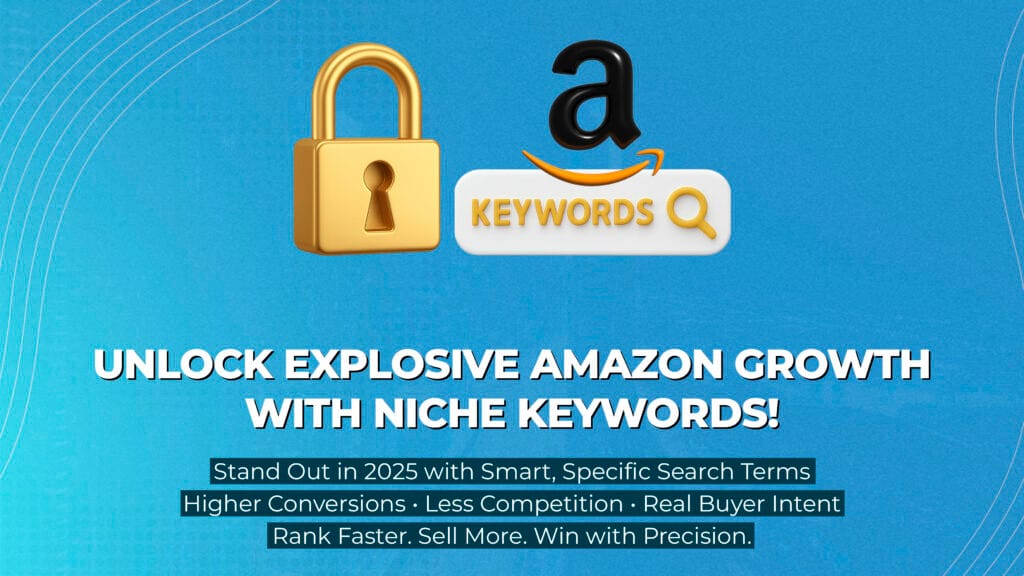
If you want to grow fast on Amazon in 2025, one smart move is to use niche keywords. These are special words or phrases that describe your product very clearly. They may not be the most searched words, but they help the right people find your items. And when the right people find you, they are more likely to buy. In this blog post, you’ll learn what niche keywords are, how to find them, and how to use them to grow your Amazon store. What Are Niche Keywords? Niche keywords are very specific search terms. Let’s say you sell backpacks. A broad keyword might be just “backpack.” But that’s super competitive. A niche keyword could be “backpack with USB charger for teens” or “eco-friendly hiking backpack under $50.” These are longer and more detailed, but they tell you exactly what a shopper is looking for. Using these detailed keywords helps you appear in searches where people are closer to buying. Plus, fewer sellers compete for these exact words, so your chances of showing up on page one go way up. Why Amazon Sellers Need Niche Keywords in 2025 Amazon keeps getting more crowded. Every year, more sellers join and more products are listed. But most sellers still focus on the big, obvious keywords. That’s a problem—they’re harder to rank for and often too general. By choosing niche keywords: A study by Jungle Scout shows that using long-tail and niche keywords leads to higher conversion rates. That means more people who find your product actually buy it. How to Find Great Niche Keywords You don’t need to be a keyword wizard to find winning niche keywords. Just follow these simple steps. 1. Use Amazon Search Suggestions When you type something in Amazon’s search bar, it shows suggestions. These are based on what real people are searching for. Type your product type and see what pops up. It’s like free keyword gold. For example, type “baby bottle” and see what comes up, maybe “baby bottle for colic” or “glass baby bottle with wide neck.” These are niche keywords you can use. 2. Try Free and Paid Tools There are some helpful tools to make this process easier: These tools show you how often a keyword is searched, how hard it is to rank for, and even give you keyword ideas. 3. Look at Customer Reviews Read what your customers are saying. Check reviews and questions on your and your competitors’ listings. People often describe your product in ways you didn’t think about, and those words can be great niche keywords. How to Use Niche Keywords in Your Listing Now that you have some keywords, where do you put them? Here’s how to make sure your listing is optimized. Product Title: Start with the most important keyword. Keep it clear but packed with value. Example: “Glass Baby Bottle – Wide Neck, Anti-Colic, BPA-Free – 8oz – for Newborns & Infants” Bullet Points: Use bullet points to explain features and add niche keywords naturally. For example: Product Description: Tell your product’s story. Make it easy to read. Sprinkle in a few more niche keywords here. Backend Keywords: In Seller Central, you can enter hidden keywords. Add niche keywords you didn’t use in your listing here. Pro tip: Don’t copy-paste keywords too much. Amazon cares about good content, not just keyword stuffing. Keeping Your Strategy Fresh in 2025 Amazon changes. Fast. What works today may not work in six months. So always stay sharp. Want to stay updated? Check Amazon’s own seller blog at Amazon Seller Central. They post changes and tips often. Start Small, Grow Big Using niche keywords is one of the easiest and cheapest ways to unlock explosive growth as an Amazon seller in 2025. These special keywords help you: You don’t need to be a tech expert or spend tons of money. Just follow the steps in this blog, stay consistent, and keep learning. Niche keywords might be small, but they can lead to big success. Ready to transform your results? Discover even more valuable tips in our other blogs. If you’re looking to boost your sales and take your listing to the next level, don’t hesitate, book a consultation call with us today. Let’s make your success happen together!
Amazon Consultant vs Amazon Agency: Which Is Better?
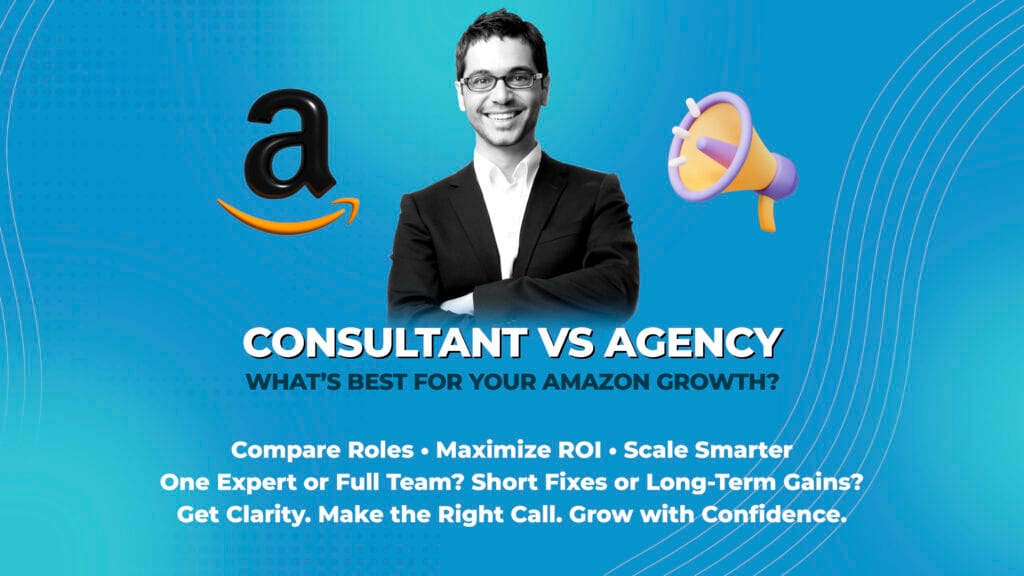
Are you an Amazon seller eager to scale your business, enhance your listings, or bounce back from account issues? You might ask, “Do I need an Amazon consultant or an Amazon agency?” While both can offer valuable support, the best option truly hinges on your unique business goals, budget, and desired level of control over your brand. This article will break down the differences, highlight the pros and cons, and guide you in determining the right choice for your current stage. By the end, you’ll gain the clarity and confidence needed to propel your business forward! The Growing Complexity of Selling on Amazon Amazon has evolved from a simple product marketplace to a complex ecosystem. Today, success requires: While an Amazon seller consultant can help with some of these tasks, many sellers find it overwhelming to juggle them all, especially as their business grows. This is where a dedicated Amazon agency can step in as a full-stack growth partner. Understanding the Roles: Amazon Consultant vs Amazon Agency An Amazon seller consultant is typically a solo expert who offers focused services, usually on a project or hourly basis. They’re ideal for quick fixes or guidance in a specific area, like listing optimization, advertising audits, or account reinstatement. In contrast, an Amazon agency operates as a team-based solution offering comprehensive, ongoing services. Agencies cover everything from creative design to PPC, inventory planning, customer service integration, and even marketplace expansion. The difference isn’t just in team size, it’s in the approach and scalability. Why Amazon Agency is Becoming the Go-To for Serious Sellers While consultants are incredibly helpful for short-term needs, agencies offer a level of support that most sellers can’t replicate in-house, especially if they’re growing fast or operating multiple SKUs. Here is what a user on Reddit had to say: 1. All-in-One Execution One of the biggest advantages of working with an Amazon agency is access to a centralized team. Instead of managing multiple freelancers or trying to be a copywriter, marketer, and strategist yourself, an agency streamlines it all. You’ll typically get: This holistic approach creates consistency and efficiency across every aspect of your store. 2. Scalability Without the Overhead Let’s say your business doubles in revenue within six months. Can your current setup handle that? Amazon agencies are structured to grow with you. They can onboard new products, ramp up ad budgets, and expand into international markets without slowing down. With a consultant, growth may require hiring more specialists or spending more time managing tasks yourself. Agencies, on the other hand, already have the systems and talent in place. 3. Team of Specialists vs. One Pair of Hands A solo Amazon seller consultant might be great at PPC or SEO, but probably not both, and certainly not photography, design, and logistics. Agencies assign each component of your business to a domain expert. This means a dedicated campaign manager handles your PPC, actual graphic artists design your creatives, and a strategist reviews your reporting. Each expert focuses on doing one thing extremely well, and your brand benefits from this depth. When an Amazon Seller Consultant Might Be the Better Fit That said, not every seller needs an agency right away. If you’re just starting or only need help with a specific issue, like a listing not indexing or a suppressed ASIN, a consultant might be the more cost-effective choice. A few scenarios where hiring an Amazon seller consultant makes more sense: Consultants are also great if you want to remain hands-on with your store but just need guidance in specific areas. Costs: Investment vs Return Some sellers hesitate to work with agencies due to higher retainers. But it’s important to view this as an investment, not just a cost. A quality agency doesn’t just maintain your Amazon business; it helps it grow. That could mean: With a consultant, your return might be more limited unless you’re highly involved in executing the advice yourself. Long-Term Growth Requires Long-Term Support Growing on Amazon isn’t just about solving problems; it’s about building a system that consistently drives profit and brand equity. Agencies are structured to offer this level of support. They don’t just fix issues; they prevent them. They don’t just optimize listings; they craft a brand story. And they don’t just run ads; they build scalable sales funnels inside Amazon’s ecosystem. That kind of long-term thinking is hard to get from one consultant working part-time on your account. Choosing the Right Partner for Where You Are Both Amazon seller consultants and agencies have their place in the ecosystem. The right choice depends on your goals, stage of growth, and level of involvement. If you’re just starting or need short-term help, a consultant might be a perfect fit. But if you’re ready to scale, automate, and dominate, then partnering with a seasoned Amazon agency could be the smartest move you make this year. Take Action Today: Choose the best Amazon Agency. At Brand Aventus, we help sellers transition from scattered operations to streamlined growth. Our team of Amazon specialists handles every part of your journey, from listing optimization and ad management to brand strategy and analytics. Book a free strategy call today to find out how we can help your Amazon business grow faster and smarter.
The Best Amazon Selling Model: Private Label vs. Wholesale
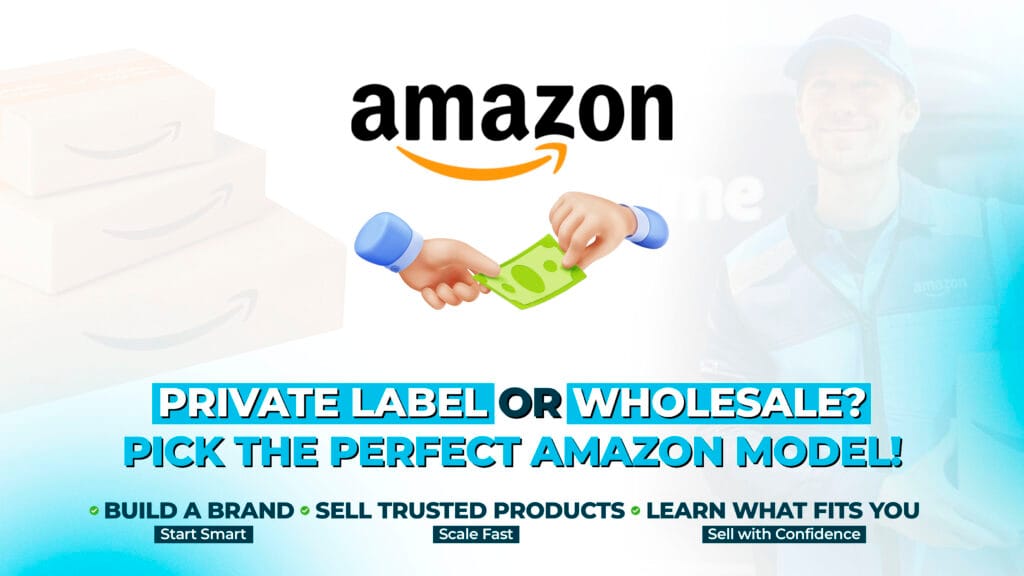
If you want to sell on Amazon but don’t know where to start, don’t worry, you’re not alone. Many people ask the same question: “What is the best Amazon selling model?” Should you sell your own brand (called private label)? Or should you buy products from a brand and sell them (called wholesale)? According to a survey, 54% of Amazon sellers use the private label business model for their own brand and product line, while wholesale lags behind at 26%. In this blog, we’ll help you pick the best Amazon selling model for YOU. What Is the Best Amazon Selling Model? Before we can choose the best one, we need to understand what each model means. Private Label: Build Your Own Brand Private label means selling products under your own brand name. You find a product, usually from a factory, put your logo on it, and sell it on Amazon as if it were your creation. Many famous Amazon sellers use this method because it lets them build something unique. For example, imagine you sell water bottles. Instead of selling any brand, you design your label, create a fun name, and sell it as a new product. It’s still a water bottle, but now it’s your water bottle. This method gives you more control. You decide the product name, price, design, and how it’s shown on Amazon. However, it takes more time and money to get started. You’ll also need to market your product so people find and trust your brand. Wholesale: Sell Well-Known Brands Wholesale means you buy products in bulk from existing brands and resell them on Amazon. These are brands people already know and trust, like Crayola, LEGO, or Dove. You’re not creating anything new; you’re just helping those products reach more buyers. Let’s say you buy 100 boxes of Crayola markers at a discount and sell them one by one on Amazon. Because people already know the brand, they’re more likely to buy quickly. This method is faster to start and usually costs less upfront, but the competition can be tough. Since you’re not the only one selling that product, other sellers might lower their prices to win the sale. You may also have less control over how your product listing looks or what price it sells for. Comparing Private Label and Wholesale: Which Is the Best Amazon Model? So, which one is right for you? Let’s compare them in a simple way: Private Label is great if you want to build your own brand and make bigger profits in the long run. You get full control, and your product stands out from the rest. But it does take more time and money to get started. Wholesale is good if you want to start quickly and don’t mind selling products that already exist. It’s easier to jump in and start making sales, but your profit might be lower, and there’s more competition. Both can work well, and it just depends on what fits you best. How to Choose the Best Amazon Selling Model for You Choosing the right model depends on your goals, your budget, and your style. Here are a few simple things to think about: First, ask yourself how much time and money you want to invest. If you have savings and can wait a few months to build your brand, private label might be a better choice. But if you want to start selling fast and see results quickly, wholesale is easier. Next, think about what excites you. If you like design, branding, and coming up with new ideas, private label gives you more freedom. If you’re more focused on numbers and flipping products quickly, wholesale might feel like a better fit. Finally, consider your long-term goal. Private label sellers often create brands that they can grow and maybe even sell one day. Wholesale sellers usually keep working to find good deals and restock products that are already popular. Starting Out: Best Model for Beginners If you’re just starting, wholesale might be the easiest way to learn how Amazon works. You’ll learn about shipping, pricing, managing inventory, and customer service without the pressure of building a brand from scratch. However, if you’ve sold products before or have some marketing experience, starting with private label can help you build something that’s truly yours. Many Amazon sellers begin with wholesale, then switch to private label once they feel more confident. Succeeding with the Best Amazon Selling Model No matter which model you choose, success on Amazon comes from doing the basics well. Learn Amazon’s rules carefully so your account stays safe. Choose products that people are already searching for. Use clear titles, helpful descriptions, and great photos so your product looks professional. And always take care of your customers, fast replies, quick shipping, and a friendly tone go a long way. Reviews also matter a lot. Happy customers leave good reviews, and good reviews help you get more sales. Be honest, helpful, and do your best every time. What Really Is the Best Amazon Selling Model? The truth is, the best Amazon selling model depends on YOU. If you want full control and creative freedom and are ready to invest more time and money, go with a private label. If you want a quicker start, lower risk, and easier entry, choose wholesale. There’s no one-size-fits-all answer. Both models work, and many sellers even do both. Ready to Choose the Best Model? Let Brand Aventus Help You Still unsure which model is right for you? You don’t have to figure it out on your own. At Brand Aventus, we help Amazon sellers like you launch, grow, and scale their business, whether you’re starting with private label or wholesale. Our team of experts can guide you through every step: from choosing the right products and creating powerful listings to navigating Amazon’s tricky rules and avoiding account issues. Get faster results. Avoid costly mistakes. Build a real, profitable Amazon business. Let’s turn your Amazon goals into real income.
5 Ways to Build Resilient Catalogs Without Breaking the Bank
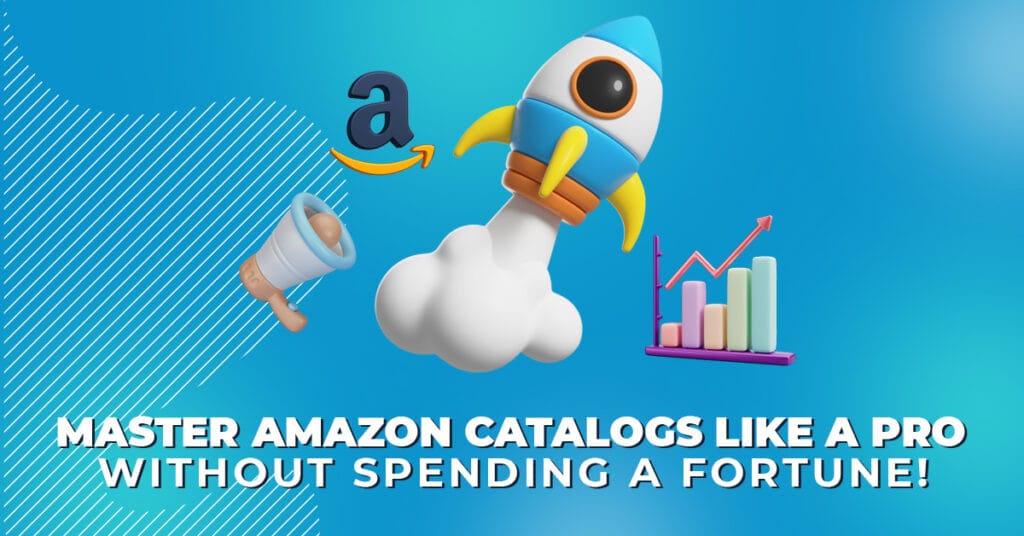
Managing a large Amazon catalog can become overwhelming quickly. As your product range expands, so does the complexity of maintaining accuracy and keeping everything up-to-date. In our previous blog, we explored the hidden costs of managing large catalogs and how to prevent common issues before they arise. Now, let’s look at actionable strategies to streamline your catalog management. We’ll share practical solutions that enable you to scale efficiently, avoid costly mistakes, and build a resilient catalog all without breaking the bank. Using Flat Files for Bulk Updates One of the most efficient ways to handle large catalog updates on Amazon is through the use of flat files. These files are essentially spreadsheets that enable you to update multiple listings simultaneously, significantly reducing the time and effort required to manage hundreds or thousands of SKUs. Bulk updates. Instead of manually updating each product listing one by one, flat files allow you to update large numbers of listings simultaneously. Whether you’re adjusting prices, titles, descriptions, or inventory levels, you can make changes in bulk. Time savings For large catalogs, this means the difference between spending hours on individual updates versus executing a batch process that gets the job done in minutes. Error reduction By handling updates through a single file, you minimize the risk of human error that can occur when manually updating each listing. Using flat files streamlines your catalog management, ensuring that your updates are accurate and consistent across all listings. This method is especially powerful when making major changes to product details, so you can keep your catalog running smoothly without disruption. Keeping Parent-Child Variations Clean Managing parent-child variations (e.g., size, color, style) is a challenging yet essential aspect of catalog management, particularly in the apparel industry. If your variations are messy or incorrectly linked, it can confuse customers and Amazon’s algorithm, resulting in lower conversions and even lost sales. Correct linking Ensure that the parent ASIN (the main product listing) links correctly to its child variations (such as size, color, etc.). A mistake here could result in a jumbled listing where customers end up buying the wrong product. Consistent data Use standardized naming conventions for your variations. If you’re selling shirts in multiple colors, ensure that each variant is listed with the correct color and size combination. Preventing hijackers Keep a close eye on your variations to avoid listing hijackers or counterfeit sellers attaching their products to your ASINs. By keeping your variations clean and consistent, you enhance the customer shopping experience, avoid errors, and increase the likelihood of Amazon recommending your product. Tracking Changes Using Amazon Reports Amazon provides a wealth of reporting tools that allow you to track changes, monitor listings, and identify potential issues before they escalate. These reports are essential for large catalog management, as they give you a clear view of what’s happening with your listings, allowing you to take action as needed. Performance report Amazon offers various reports that track key performance metrics, including sales, impressions, and conversion rates. Regularly reviewing these helps you understand how well your listings are doing and where adjustments are needed. Inventory report Keeping track of stock levels and sales velocity through inventory reports ensures you don’t run into stockouts or oversupply issues. Listing quality reports These reports highlight any issues with your listings, such as missing attributes, incomplete data, or potential policy violations. By staying on top of your reports, you can quickly identify and correct problems, making it easier to maintain a healthy and resilient catalog. Third-Party Tools for Catalog Management Managing a large catalog manually is not only time-consuming, but it’s also prone to errors. Fortunately, there are several third-party tools designed to simplify and automate catalog management. These tools help you optimize your listings, track performance, and manage variations, so you don’t have to do it all by hand. Helium 10 This all-in-one toolset offers a comprehensive suite of features that help you optimize your listings, track keywords, manage inventory, and more. It’s especially useful for conducting keyword research, optimizing product descriptions, and automating reporting. SellerApp SellerApp is another powerful Amazon tool that helps streamline catalog management by providing detailed product research, listing optimization, and data-driven insights to help you grow your sales. Data automation tools Tools like Feedvisor and ChannelAdvisor help automate inventory management, pricing strategies, and catalog updates, allowing you to focus more on scaling your business. Utilizing these third-party tools can save you hours of manual work, reduce errors, and enable you to make data-driven decisions that enhance your catalog’s performance. Don’t Overlook Backend Keywords When you’re managing a large catalog, every detail matters, and backend keywords are one of the most overlooked yet cost-effective tools in your Amazon toolbox. These hidden keywords don’t appear on your product listings, but they signal to Amazon’s algorithm what your product is about, helping it show up in the right searches. Here’s how they contribute to streamlined, resilient catalog management Consistency = Control Using a standardized approach to backend keywords across product types ensures your listings perform uniformly and reduces the chance of internal keyword overlap or confusion. Zero Cost Visibility Backend keyword optimization is a free yet powerful tool. Done right, it boosts your organic reach without additional PPC spend, a must when you’re trying to grow without inflating your budget. Easier Maintenance With structured backend keyword templates, your team can update or expand listings quickly without having to start from scratch, saving time and reducing human error. Think of backend keywords as the silent framework holding your catalog together. When managed strategically, they strengthen your entire listing ecosystem at scale and on budget. Final Remarks Managing a large catalog doesn’t have to be a burden. By using flat files for bulk updates, keeping parent-child variations clean, tracking changes through Amazon reports, and leveraging third-party tools, you can streamline your catalog management process and avoid the headaches that often come with scaling. At Brand Aventus, we specialize in helping brands like yours optimize their Amazon catalog and streamline their operations. Whether


